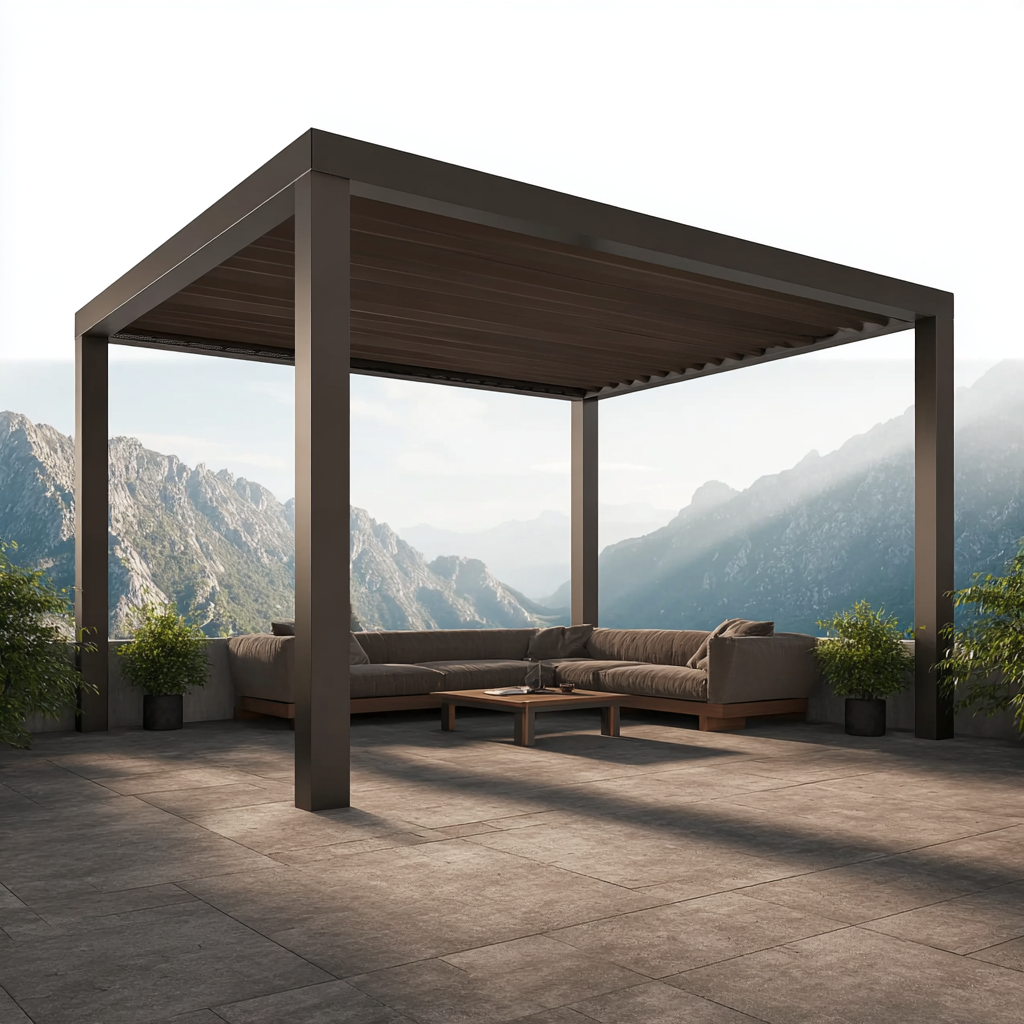Wind Resistance in Pergolas: Engineering Excellence for European Weather
Understanding European Wind Challenges
Europe's diverse climate zones present unique challenges for outdoor architecture. From the Mistral winds of southern France reaching 90 km/h to the fierce Atlantic storms battering coastal regions, pergolas must be engineered to withstand extreme conditions while maintaining structural integrity and operational functionality.
The challenge intensifies when considering that pergolas aren't just static structures—they often feature moving components like adjustable louvers, retractable systems, and integrated technology. In case nature couldn't make it predictable, advanced engineering ensures these systems continue operating safely even in adverse conditions.
European Wind Classification System
Engineering Fundamentals: Load Distribution and Structural Design
Effective wind resistance begins with understanding how wind forces interact with pergola structures. Modern engineering employs finite element analysis (FEA) to model stress distribution across all components, ensuring weak points are identified and reinforced before production.
Critical Load Factors:
- Uplift Forces: Wind creating suction above horizontal surfaces
- Lateral Pressure: Direct wind impact on vertical and angled surfaces
- Dynamic Loading: Oscillating forces from gusty conditions
- Combined Loads: Multiple directional forces acting simultaneously
Premium pergolas utilize triangulated support structures and strategic reinforcement points. The frame geometry distributes wind loads across multiple pathways, preventing stress concentration that could lead to failure. Cross-bracing and diagonal supports transform rectangular frames into highly stable structural systems.
High-grade 6063-T6 aluminum alloy provides exceptional strength-to-weight ratios. Wall thickness specifications of 2.5-3.5mm in critical areas ensure structural integrity while maintaining reasonable weight for installation. Advanced extrusion techniques create seamless joints that eliminate weak points.
Smart Wind Response Systems
Modern pergolas don't just resist wind—they respond intelligently to changing conditions. Automated wind sensors continuously monitor conditions and trigger protective responses before damage can occur.
| Wind Speed | System Response | Protection Level | Recovery Time |
|---|---|---|---|
| 25-35 km/h | Louver adjustment warning | Preventive | Immediate |
| 36-50 km/h | Automatic louver closure | Active protection | 2-3 minutes |
| 51-70 km/h | Full system retraction | Complete protection | 5-10 minutes |
| 70+ km/h | Emergency lockdown | Survival mode | Manual reset required |
Why Automated Response Matters
Manual systems rely on human intervention, often too late to prevent damage. Sensor-driven automation provides response times measured in seconds, not minutes. This technology is particularly crucial for commercial installations and vacation properties where immediate human response isn't guaranteed.
Foundation and Anchoring Systems
Even the strongest pergola frame is only as secure as its foundation. Engineered anchoring systems must transfer wind loads safely into the ground or building structure without compromising the integrity of either system.
Foundation Types and Applications:
Minimum 800mm depth with steel reinforcement cages. Concrete grade C25/30 or higher ensures long-term stability. Anchor bolt specifications typically M16 or M20 grade 8.8 steel with minimum 400mm embedment depth.
Structural wall anchors rated for pullout forces exceeding 2000N per anchor point. Chemical anchoring systems provide superior holding power in masonry construction. Load distribution plates spread forces across larger areas.
Combination systems using both ground anchors and building attachment. Provides redundant load paths and allows installation where single-method foundations aren't practical.
Testing and Certification Standards
European pergola manufacturers must comply with stringent testing standards that simulate real-world wind conditions. The EN 13561 standard defines test procedures for solar protection devices and external blinds, including pergola systems.
Key Testing Protocols:
- Static Load Testing: Continuous force application simulating sustained winds
- Cyclic Load Testing: Repeated loading simulating gusty conditions
- Ultimate Load Testing: Testing to failure to establish safety margins
- Operational Testing: Verification of automated systems under load
Regional Considerations Across Europe
Different European regions require specific engineering approaches based on local climate patterns and building codes.
| Region | Primary Wind Challenge | Design Specification | Special Requirements |
|---|---|---|---|
| Mediterranean Coast | Mistral/Bora winds | Class 2+ rating | Salt corrosion protection |
| Atlantic Coast | Ocean storms | Class 3 rating | Enhanced drainage systems |
| Alpine Regions | Föhn winds, thermal gusts | Class 2+ rating | Snow load considerations |
| Northern Europe | Sustained winter storms | Class 2 rating | Low-temperature operation |
Installation Best Practices for Wind Resistance
Proper installation is crucial for achieving designed wind resistance. Even perfectly engineered pergolas can fail if installation practices don't meet specifications.
Critical Installation Factors:
- Soil analysis and foundation design verification
- Precise anchor bolt placement and torque specifications
- Proper sensor calibration and testing
- Structural attachment point verification
- System commissioning and wind response testing
Maintenance for Long-Term Wind Resistance
Wind resistance isn't just about initial design—it requires ongoing maintenance to ensure continued performance. Preventive maintenance programs identify and address potential issues before they compromise structural integrity.
Annual Inspection Checklist:
- Foundation and anchor point inspection
- Frame joint and connection verification
- Wind sensor calibration and testing
- Moving component lubrication and adjustment
- Weather seal inspection and replacement
Engineering Excellence in Every Installation
Discover how Gutroof's wind-resistant pergola systems provide unmatched durability and peace of mind for European conditions.
Download Technical Specifications Installation GuidelinesAbout Gutroof Engineering: Our pergola designs undergo rigorous wind tunnel testing and exceed European safety standards. With over two decades of engineering excellence, we provide solutions that perform reliably in Europe's most challenging weather conditions.
